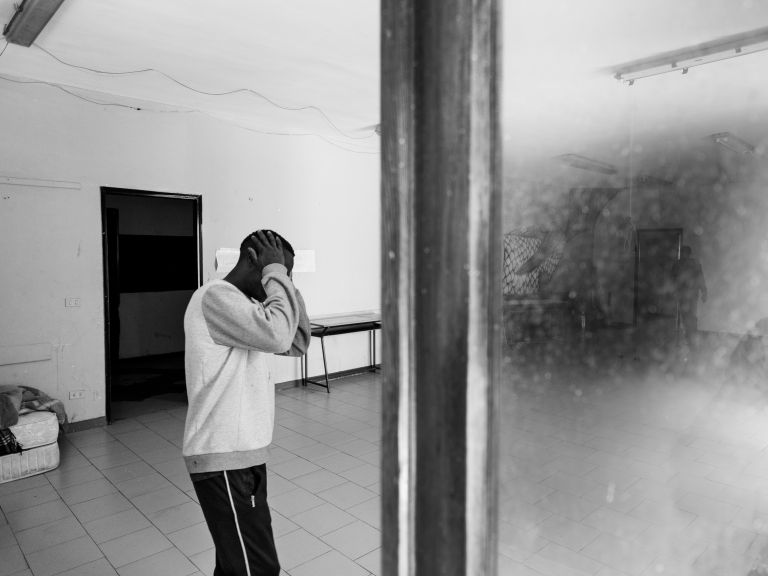Project Detail: Second Reception
Contest:
LuganoPhotoDays 2015 Open
Brand:
LuganoPhotoDays
Author:
Marco Sacco
Status:
Selected
Project Info
Second Reception
The migration flows, intensified especially in recent years, are the most obvious symptom of political instability in many countries bordering the Mare Nostrum and sub-Saharan Africa.
The strategic position of Italy in the Mediterranean basin favors the arrive of many migrants who choose the ways of the sea to reach the Beautiful Country (a.k.a. Italy "Bel Paese"), but it almost never is their ultimate goal, but simply wants to be a corridor to other countries European Union, in the hope of a better life.
But what are the steps that follow the exodus from their country?
After arrival in real "human harbours," such as those of Lampedusa and Marsala, the Italian reception system is divided into two phases: the first takes place in the reception centers of government, the second, continues inside SPRAR (Sistema di Protezione per Richiedenti Asilo e Rifugiati - Protection System for Asylum Seekers and Refugees) or, as often happens, which leads to solutions of ambiguous legality and of dubious assurance of a lifetime dignified.
In Bari, the former grammar school Socrate, the former industrial site S.E.T. and the Ferrhotel, a former hotel owned by Trenitalia, that in the last years are a second reception centers for migrants from all over Africa, are the prime example of how this system is ruinous. Inhabited since 2009 (Ferrhotel and Socrate) or 2014 (S.E.T.), and despite the approval by the local Authority, where the same are then not committed to the implementation of projects that can provide integrated reception, a refugee right.
The Authority should support Third Sector Organisations, protagonists in the implementation of integration initiatives that target not only the implementation of basic measures, such as food and lodging, but also the provision of services to facilitate the acquisition of tools for the autonomy of the beneficiaries. None of this, however, was granted to immigrants, fitted with a valid residence permit and having the right to political asylum.
And then, aided by a committee of support, the occupants of this second reception centers have undertaken self-organized activities that have temporarily remedied the non-compliance of the government organism, about the second reception. But, in spite of the help of volunteers, the situation is precipitated in the years. With the passage of time in fact, self-management initiatives have had less and less effective for both the social unrest that plagues the occupants, both for the total indifference of the relevant bodies to their problems.
Currently the occupants would need health care and social support, multicultural activities, an appropriate school for the children, of linguistic and cultural mediation, learning the language and sometimes even literacy, guidance and legal information, housing accommodation, of work placement, training services and much more.
In fact, many non-EU have not integrated neither culturally nor linguistically, and it is synonymous with the fact that since they lives here - some even up five years ago - have never worked but have spent whole days in structure, camping out and bored.
The sanitary conditions are then manifestly deficient: unhealthy smells, dirt, proliferation of insects infest the environments in which they lived.
The pictures, in support of the complaint to the state in which experience immigrants and structures, are part of a project in a growth phase that has as its ultimate goal the documentation of the condition and the drama of these individuals, political parties from the South with the hope of a better life to the more prosperous North, are instead stuck in a country that is unlikely to give them a better alternative.
The lack of employment, and thus the absence of income, are blocking these immigrants in a limbo Italian and European laws that sometimes foolish and often poorly enforced, into a labyrinthine of bureaucracy, without even a chance to make return home or reach their loved ones in other countries of Europe (ref. Agreement Shenghen, the Dublin II Regulation). The report then chases the hope that, once published, these photos can awaken public opinion on this current and relevant theme, and that can especially deal a series of concrete actions to their aid.
I tried to show in the most neutral and clear their condition. I did not know any of them and when I walked in the school and I shared my time between them, respecting their homes (former classrooms, tents or hotel rooms) and respecting their desire to be photographed or not.


















